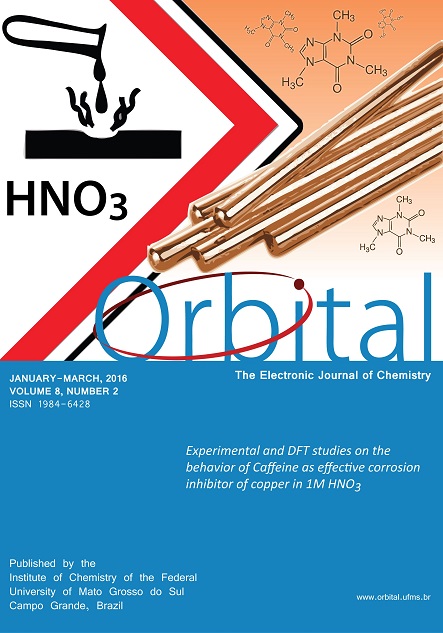Síntese e Caracterização Estrutural de Complexos Metálicos de Cu(II) para Modificação de Eletrodo de Carbono Vítreo por Adsorção Química
- chemically modified electrode,
- glassy carbon,
- metal complexes,
- cyclic voltammetry
Copyright (c) 2016 Orbital: The Electronic Journal of Chemistry

This work is licensed under a Creative Commons Attribution-NonCommercial-NoDerivatives 4.0 International License.
Abstract
The copper complexes has been synthesized resulting in a yield of 90%. The melting point of the complex and UV-Vis spectroscopy suggested complexation with high purity. The atomic absorption spectroscopy flame determined, together with the gravimetric analysis, the stoichiometric ratio obtained between metal and ligand for the complex. The potentiometric titration proposed which active sites are related to coordination with the metal, such coordination’s sites were confirmed by infrared spectroscopy. Studies about the adsorption of chemical modifiers in the glassy carbon of the electrode surface resulting in obtaining ideal conditions for the electrode modification estimating the exact time of contact with modifier sunder ultrasound in different means of dissolution. The electrochemical properties of the electrodes howed improvements in electrochemical response to the redox couple Fe3-/4- than the unmodified electrode through organic dissolution.


